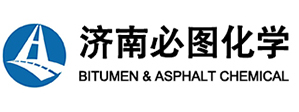- mike@bitumenchem.com
- +86 15066607710
- Tongfa Avenue, Changqing District,Jinan
Location: Home > News & Trends > Industry News
When evaluating the efficiency and applicability of different catalysts in the production of SBS modified bitumen, comparison and analysis can be made from the following aspects:
1. Dispersion effect of catalyst: By comparing the effects of different catalysts on the performance of modified bitumen under the same shear conditions, its dispersion effect can be evaluated. For example, as the shear rate increases, the dispersion effect of the modifier gradually improves. Therefore, the dispersion ability of different catalysts can be judged by measuring indicators such as ductility and needle penetration of modified bitumen.
2. Physical and chemical properties of modified bitumen: When evaluating the efficiency of the catalyst, key indicators such as storage stability, high temperature stability and low temperature crack resistance of modified bitumen should be paid attention to. These properties directly affect the service life and road performance of bitumen.
3. Adaptability of production process parameters: Different catalysts may have different adaptability to process parameters such as shear time, shear temperature and shear rate. It is necessary to determine the performance of each catalyst under the optimal process conditions through experiments to find the most suitable catalyst.
4. Economy and operability: When evaluating the applicability of a catalyst, its cost, availability, and ease of operation during the production process should also be considered. These factors will directly affect the practical application of the catalyst.
5. Environmental impact: Consider the environmental friendliness and safety of the catalyst during the production process to ensure that it will not have a negative impact on the environment in practical applications.
In summary, by comparing the performance of different catalysts in the above aspects, their efficiency and applicability in the production of SBS modified bitumen can be effectively evaluated.
- Is the preparation method of SBS modified bitumen
- Can we predict the performance and stability of mo
- Advantages and Disadvantages of Segregation Test t
- BAC:Lower cost and higher reliability
- In the production process of rubber bitumen, the c
- What are the conditions that affect the epoxidatio
- What are the performance characteristics of modifi
- Why is excessive coupling agent the main cause of







